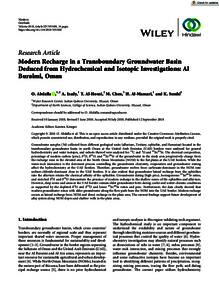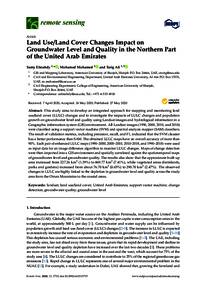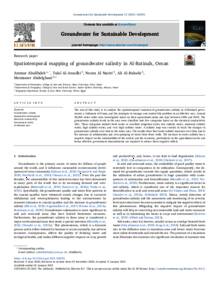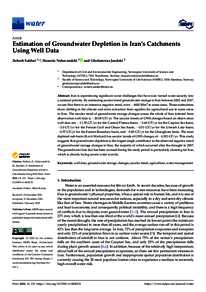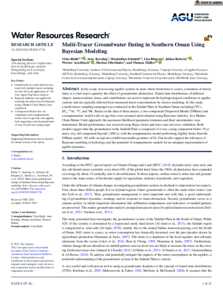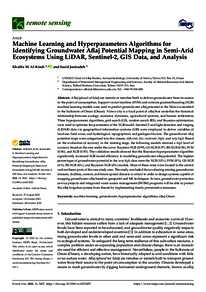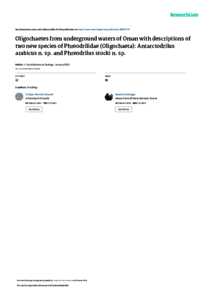Document
Modern recharge in a transboundary groundwater basin deduced from hydrochemical and isotopic investigations : Al Buraimi, Oman.
Identifier
DOI: 10.1155/2018/7593430
Source
Geofluids. v. 2018, 7593430
Contributors
Country
United Kingdom.
Publisher
Hindawi Limited.
Gregorian
2018-01-01
Language
English
English abstract
Groundwater samples (54) collected from different geological units (alluvium, Tertiary, ophiolite, and Hawasina) located in the transboundary groundwater basin in north Oman at the United Arab Emirates (UAE) borders were analyzed for general hydrochemistry and water isotopes, and subsets thereof were analyzed for 14C and 3H and 87Sr/86Sr. The chemical composition, percentage of modern carbon (pmc), δ2 H, δ18O, and 87Sr/86Sr of the groundwater in the study area progressively change from the recharge zone in the elevated area of the North Oman Mountains (NOM) to the flat plains at the UAE borders. While the water-rock interaction is the dominant process controlling the groundwater chemistry, evaporation and groundwater mixing affect the hydrochemistry at the UAE borders. Therefore, groundwater evolves from carbonate-dominant in the NOM into sodium chloride-dominant close to the UAE borders. It is also evident that groundwater lateral recharge from the ophiolites into the alluvium retains the chemical affinity of the ophiolites. Groundwater dating (high pmc), homogeneous 87Sr/86Sr ratios, and enriched δ2H and δ18O demonstrate the presence of modern recharge in the shallow zones of the ophiolites and alluvium. However, deep zones and areas at the UAE border contain older groundwater form during cooler and wetter climatic conditions as supported by the depleted δ2H and δ18O and lower 87Sr/86Sr ratios and pmc. Furthermore, the data clearly showed that modern groundwater mixes with older groundwater along the flow path from the NOM into the UAE border. Modern recharge occurs as lateral recharge from NOM and direct recharge in the plain area. The current findings support future development of aflaj system along NOM slopes and shallow wells in the plain areas.
ISSN
1468-8115
Category
Journal articles

